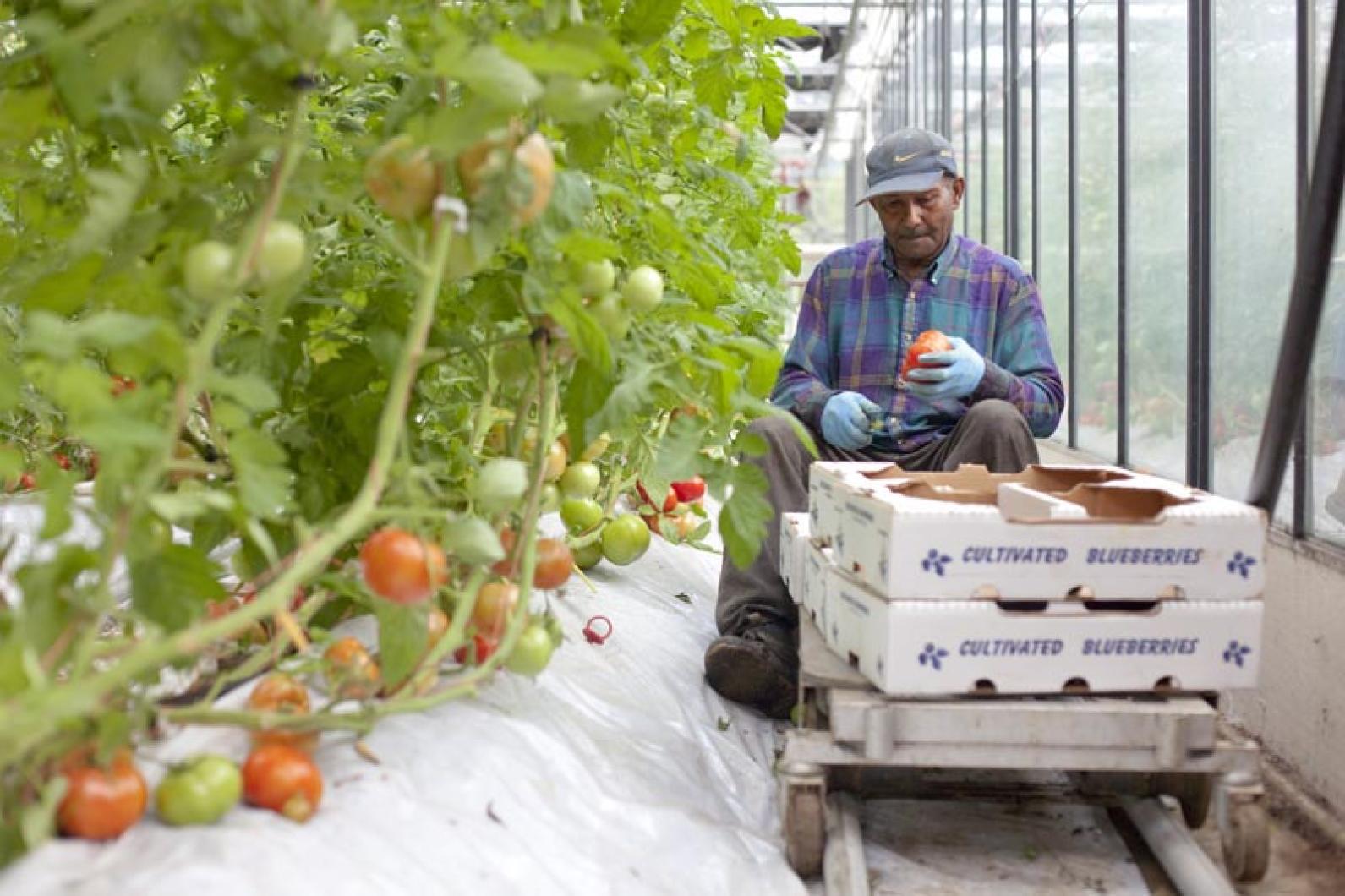Late blight: the first part of the name given to the vicious plant disease that affects tomatoes and potatoes is somewhat misleading, at least this year.
Evidence of the fungus has never arrived so early in the season, nor has it ever been so widespread in the United States as it is now, according to the University of Massachusetts at Amherst vegetable program.
And Vineyard farmers, especially organic farmers, are on high alert.
In a newsletter released last week the Amherst program advised organic farmers to scout regularly for evidence of the disease and if a widespread presence of the fungus is found, to mow and flame their crop.
The latter half is apt, particularly given its history.
The devastating fungus appeared in the United States more than 100 years ago and was infamous among Irish Americans as the cause of the Great Famine and the diaspora that together depleted Ireland’s numbers by up to one-quarter.
If not killed by pesticides or otherwise impeded, the disease spreads down through the leafy portion of potato plants to the tubers beneath the ground. This can kill the crop and establish the disease in future harvests.
Anyone who has handled tomatoes is likely familiar with the dark, mushy, spoiled patch that occurs in some cases around the stem of some of the fruit.
The fungus can develop on the vine or later in storage, and has the potential to spread rapidly, ruining current and future crops. The spores occur in such great numbers that they have the potential to travel far on the air to other farms.
In the 1970s an effective fungicide was developed limiting the spread of the spores for more than a decade. But a resistant strain appeared from Mexico in the late 1980s and reignited the problem. The disease has affected tomatoes and potatoes to some extent every year since.
Many experts believe that transplants sold across regions in so-called big box megastores such as Walmart and Home Depot have helped spread the disease more efficiently.
Organic farmers, who are not armed with conventional pesticides, are particularly vulnerable.
Though there is no consensus on a cause for this outbreak, some have pointed to transplants sold through Walmart by Bonnie’s Plants, a leading garden supplier. Though Bonnie’s Plants general manager Dennis Thomas has publicly questioned claims that his company is responsible for the outbreak, it recalled their transplants early this month from Walmart, Home Depot and Lowes.
Regardless, the disease is now established, according to the Amherst release.
“It not only threatens home gardens, but also the thousands of acres of commercial potatoes and tomatoes that are grown in Massachusetts and across New England,” it states.
Several Island farmers report having scouted fungus on tomato and potato plants this week, including Andrew Woodruff of Whippoorwill Community Supported Agriculture farm in Vineyard Haven and Simon Athearn of Morning Glory Farm in Edgartown.
Mr. Athearn is confident he can control the disease and continue a successful season.
“Hopefully we’ll make it through to harvest with the potatoes,” he said.
He said that late blight or some other disease generally picks off his organically grown potatoes and tomatoes, rather than the first frost.
Once the plants begin producing fruit they lose strength, making them more susceptible to disease.
“A lot of time it’s worth plowing under before the frost,” said Mr. Athearn.
“Each season it’s just a question of when: the answer for which lies in vigilant management and luck.
“At some point in the season I always expect it to be present. It’s definitely early though.”
One tool at Mr. Athearn’s disposal is the Internet, which he uses for several aspects of his farming routine. He checks several vegetable reports on a regular basis, primarily the Amherst Web site, umassvegetable.org.
“The vegetable reports are giving dire warnings,” he confirmed yesterday.
Last week he read the advice to farmers that if the disease is firmly established to till the crop under and to inoculate the soil for future seasons.
The obvious downside is that it means zero yield for the current season.
“I read that and I went straight out to the fields to scout the tomato crop,” he said.
Mr. Athearn uses an organic fungicide on his greenhouse tomatoes but outside he relies on other tricks mainly revolving around moisture prevention.
Late blight thrives in cool, rainy conditions of which the Vineyard has had plenty so this year. June saw 25 days of rain and July has been unseasonably cool.
Mr. Athearn farms on trellis-raised beds to keep the tomatoes off the moist ground, prunes leaves from the bottom of the plant which can hold water, and uses black plastic mulch to keep the tomatoes warm. In dire cases he thins down the plant to one or two stems, making it stronger with fewer leaves to clog up the inside.
“You try to be a smart farmer,” he said.
This column is meant to reflect all aspects of farm life on the Vineyard. Sam Bungey can be reached at sbungey@mvgazette.com or by calling 508-627-4311 extension 120.





Comments
Comment policy »